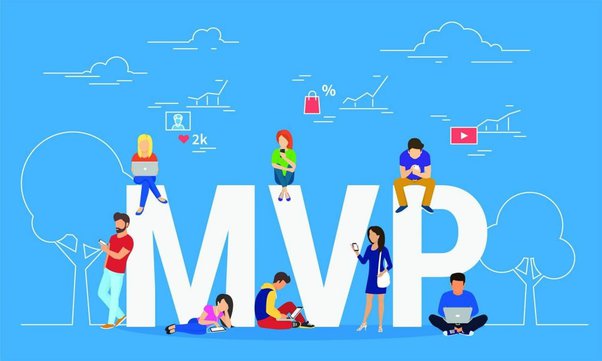Subleasing commercial space can be a strategic move for tenants looking to optimize their leased premises or offset costs. However, managing subtenant relationships requires careful planning, oversight, and communication to ensure that both the sublessor (original tenant) and subtenant (secondary tenant) can coexist harmoniously. In this article, we will explore the key aspects of managing subtenant relationships effectively while maintaining control and oversight.
The Dynamics of Subtenant Relationships
Managing subtenant relationships involves navigating a unique set of dynamics. In a sublease arrangement, the sublessor is both a tenant and a landlord to the subtenant. This dual role requires clear communication, well-defined responsibilities, and proactive management to ensure a smooth and productive relationship.
Key Aspects of Subtenant Relationships:
- Rent Collection: The sublessor is responsible for collecting rent from the subtenant and ensuring that it aligns with the terms of the sublease agreement business lease lawyers. This includes specifying the rent amount, due date, and payment method.
- Property Maintenance: While the sublessor may have delegated some maintenance responsibilities to the subtenant, they are ultimately responsible for the property’s overall upkeep and ensuring that it complies with the primary lease.
- Communication: Open and transparent communication is essential to address any concerns, repairs, or changes in a timely manner. Both parties must maintain clear lines of communication to foster a positive working relationship.
- Legal Compliance: The sublessor is responsible for ensuring that the subtenant complies with the terms of the sublease agreement and, by extension, the primary lease. This includes adherence to zoning laws, safety regulations, and other legal requirements.
Key Aspects of Managing Subtenant Relationships
Managing subtenant relationships effectively requires attention to several key aspects:
1. Clear and Comprehensive Sublease Agreement
A well-drafted sublease agreement is the foundation for managing subtenant relationships. The agreement should outline the responsibilities, obligations, and expectations of both parties in detail. It should also reference the terms of the primary lease to ensure alignment.
- Rent Payment: Specify the rent amount, due date, and payment method. Include provisions for late fees, if applicable.
- Maintenance and Repairs: Clearly define maintenance responsibilities for common areas and the subleased space. Outline procedures for reporting and addressing maintenance issues.
- Access and Use: Detail the subtenant’s access rights, permitted uses of the space, and any restrictions. Ensure that the subtenant understands their rights and limitations.
- Liabilities and Insurance: Address liability issues, insurance requirements, and indemnification clauses. Define how disputes will be resolved and what remedies are available in case of breaches.
2. Regular Communication
Establish a system for regular communication between the sublessor and subtenant. This includes periodic check-ins to discuss any issues, concerns, or necessary updates.
- Reporting: Encourage the subtenant to report any maintenance issues promptly. Create a clear process for reporting and addressing these concerns.
- Changes and Modifications: If there are changes to the property or lease terms that may impact the subtenant, communicate these changes in advance and discuss any necessary adjustments to the sublease agreement.
3. Maintenance and Repairs
Proactively manage property maintenance and repairs to ensure that the space remains will dispute lawyers in good condition. Address maintenance responsibilities and procedures in the sublease agreement.
- Regular Inspections: Conduct periodic inspections of the subleased space to identify any maintenance or repair needs. Address these issues promptly to prevent further damage.
- Maintenance Records: Keep thorough records of maintenance and repair activities, including dates, costs, and descriptions of work performed.
- Emergency Response: Establish procedures for addressing emergencies, such as plumbing leaks or electrical issues, to minimize downtime and disruption.
4. Legal Compliance
Ensure that the subtenant complies with all legal and regulatory requirements, including those outlined in the primary lease. Non-compliance can have legal and financial consequences for both parties.
- Zoning and Permits: Verify that the subtenant’s activities align with zoning laws and permits. Address any necessary permits or approvals.
- Safety Regulations: Ensure that the subtenant follows safety regulations, such as fire safety measures and building codes.
- Lease Adherence: Monitor the subtenant’s adherence to the sublease agreement and the primary lease. Address any violations promptly to mitigate risks.
5. Documentation and Record-Keeping
Maintain organized and comprehensive records related to the sublease agreement, property maintenance, rent payments, and all communications. Proper documentation is essential for resolving disputes and ensuring compliance.
- Rent Records: Keep records of all rent payments, including receipts or transaction history. This helps track payment history and address any discrepancies.
- Correspondence: Maintain copies of all written communications, emails, and agreements between the sublessor and subtenant.
- Maintenance History: Keep a log of all maintenance and repair activities, including invoices and receipts for services rendered.
6. Dispute Resolution
Include provisions in the sublease agreement for dispute resolution. Specify whether disputes will be resolved through mediation, arbitration, or legal action.
- Mediation: Consider using mediation as a first step to resolve disputes amicably. Mediation can often lead to mutually acceptable solutions without resorting to litigation.
- Arbitration: If mediation fails, specify arbitration as the next step. Arbitration is a more formal process in which a neutral third party makes a binding decision.
- Legal Action: In extreme cases, the sublease agreement should outline the process for pursuing legal action in compliance with local laws and regulations.
Challenges in Managing Subtenant Relationships
While effective management is essential, challenges may arise in managing subtenant relationships. Some common challenges include:
1. Rent Collection Issues
Late or missed rent payments can be a source of tension. Sublessors should establish clear rent payment procedures and consequences for late payments in the sublease agreement.
2. Maintenance Disputes
Differences in maintenance expectations or disputes over who is responsible for specific repairs can strain the relationship. Regular communication and a well-defined maintenance protocol can help mitigate these issues.
3. Compliance and Violations
Subtenants may unintentionally violate the terms of the sublease agreement or the primary lease, putting both parties at risk. Vigilance and clear communication are key to addressing and preventing violations.
4. Conflicts of Interest
The dual role of the sublessor as both tenant and landlord can create conflicts of interest. Transparency and fairness are essential to address potential conflicts.
Conclusion
Managing subtenant relationships requires a proactive and organized approach to ensure a harmonious and mutually beneficial arrangement. By establishing clear expectations, maintaining open communication, and addressing maintenance and compliance issues promptly, both sublessors and subtenants can navigate the complexities of subleasing effectively.
Proper documentation, regular inspections, and dispute resolution mechanisms are essential tools for maintaining control and oversight while fostering a positive working relationship. Ultimately, effective management of subtenant relationships is a key factor in the success of sublease agreements in the world of commercial real estate.












